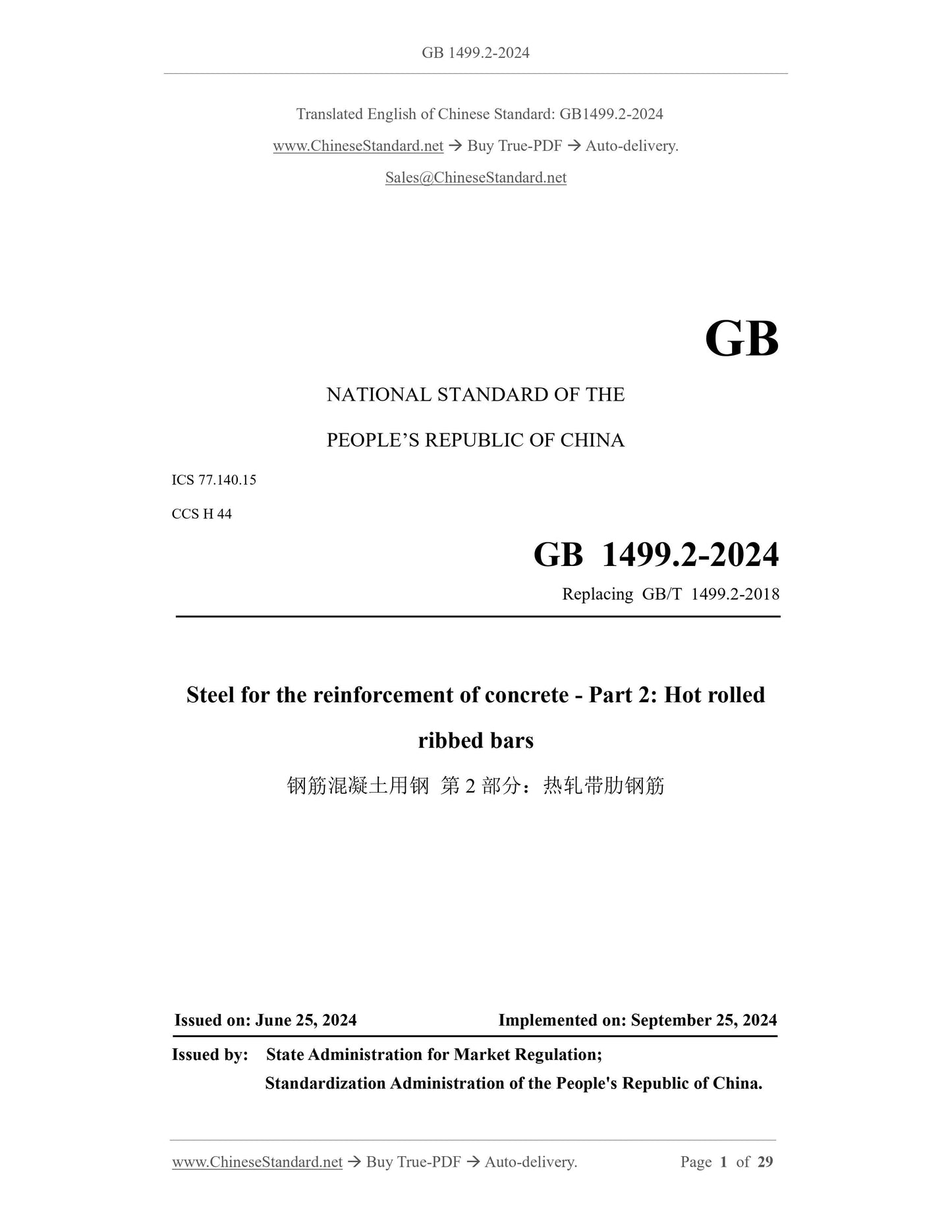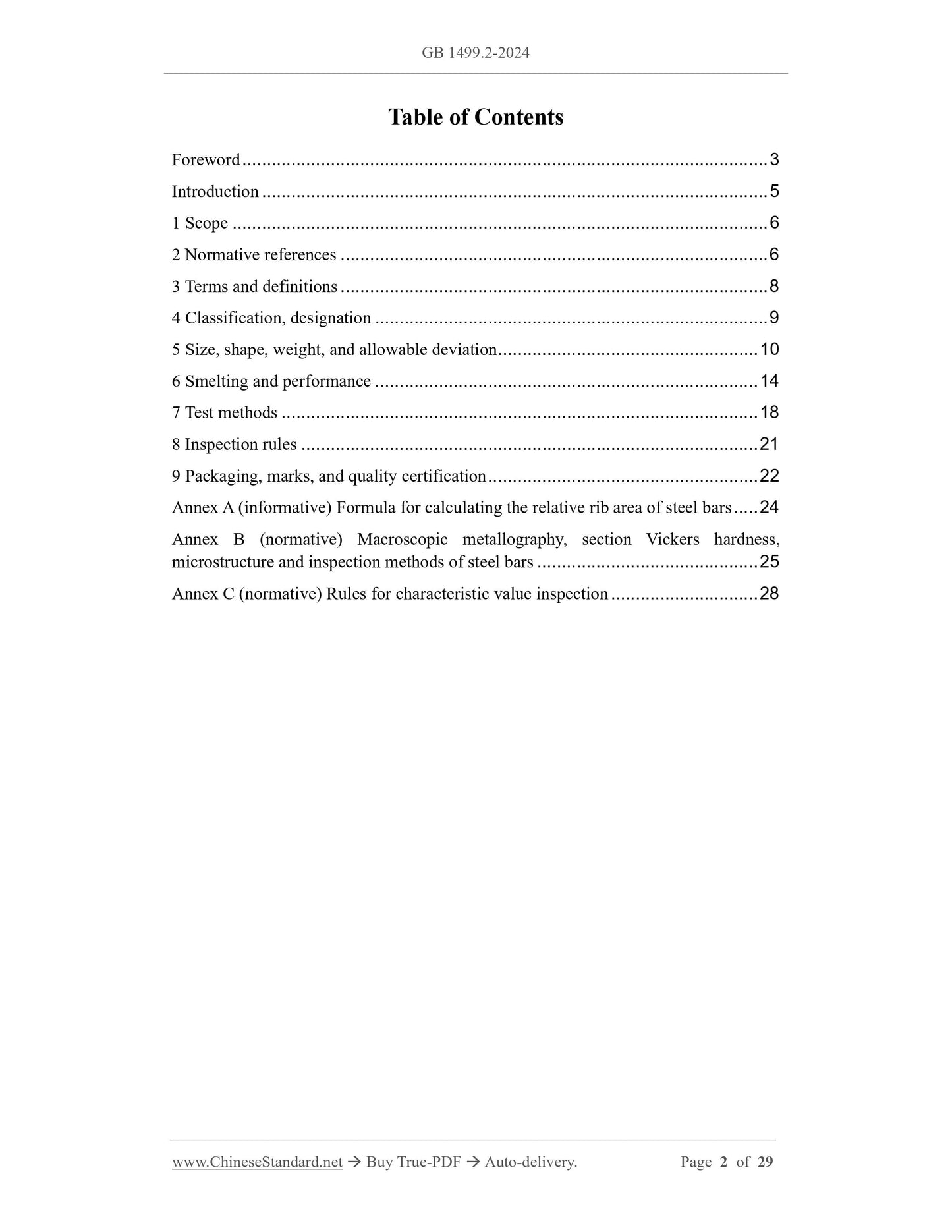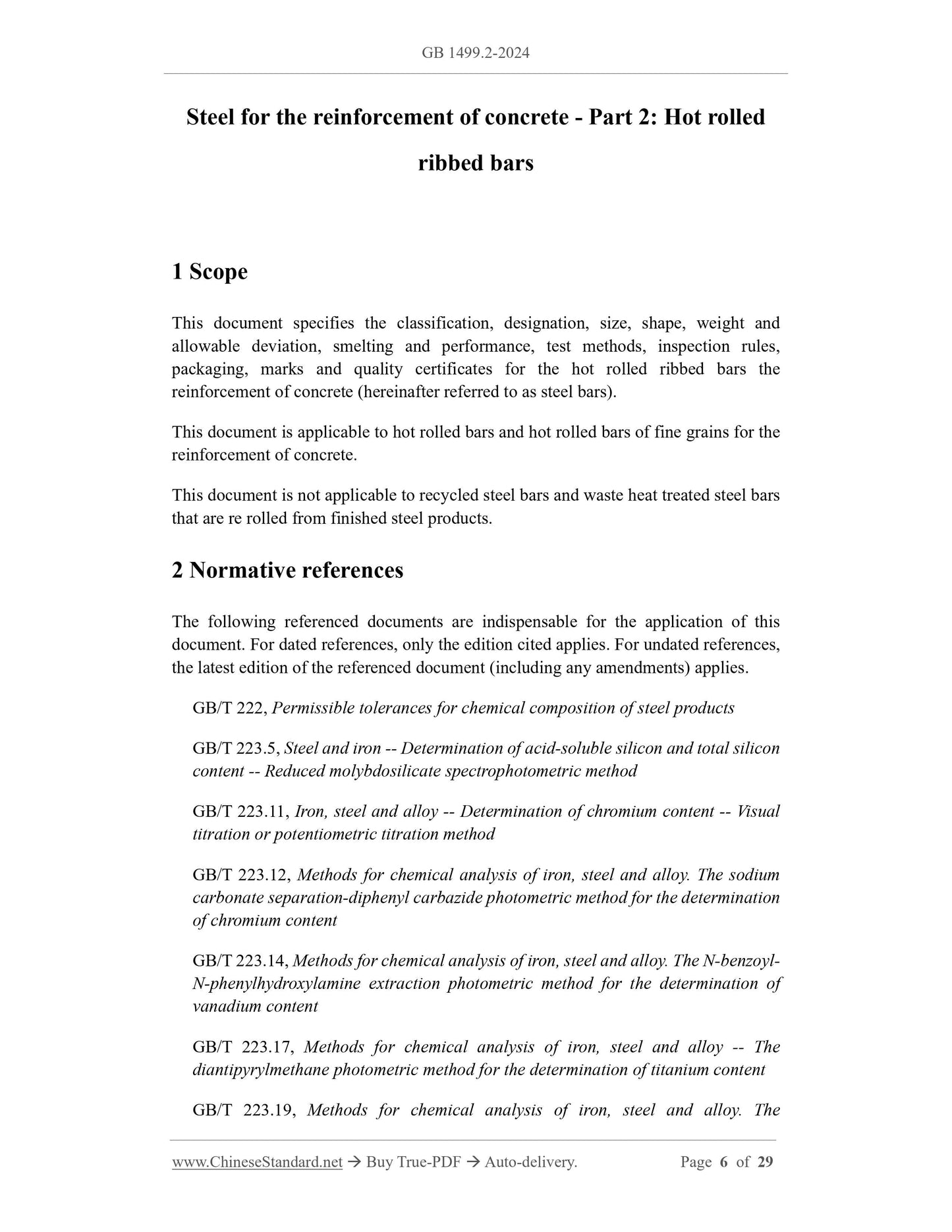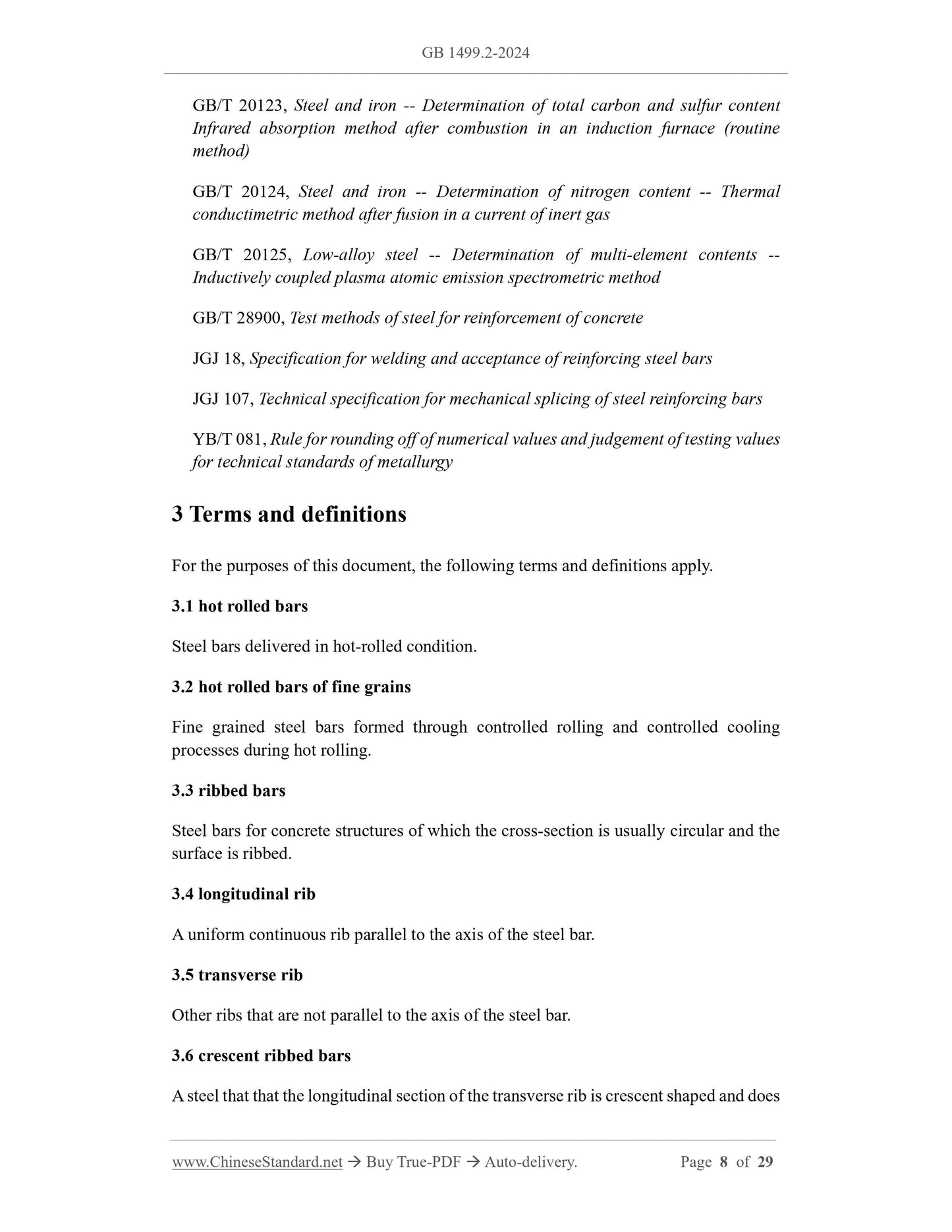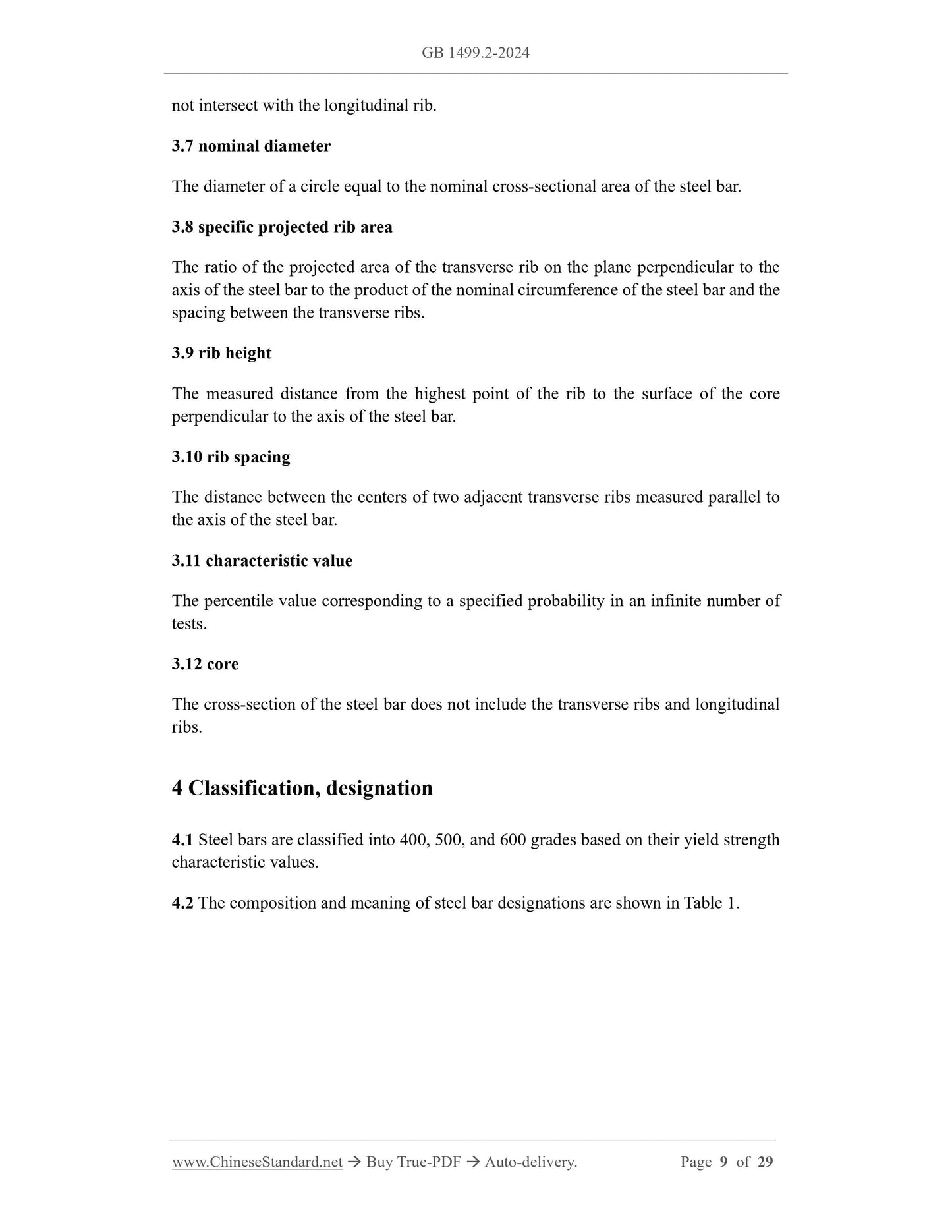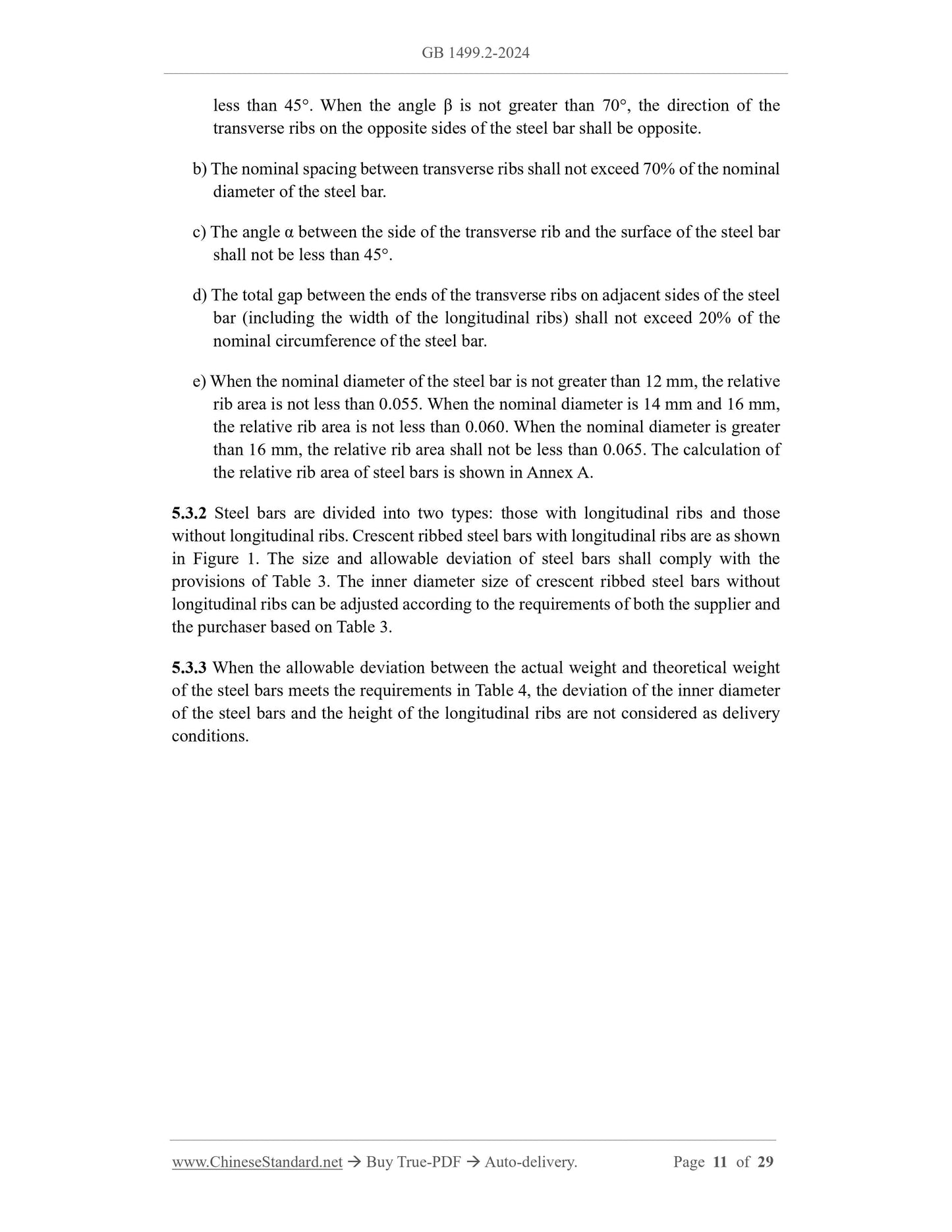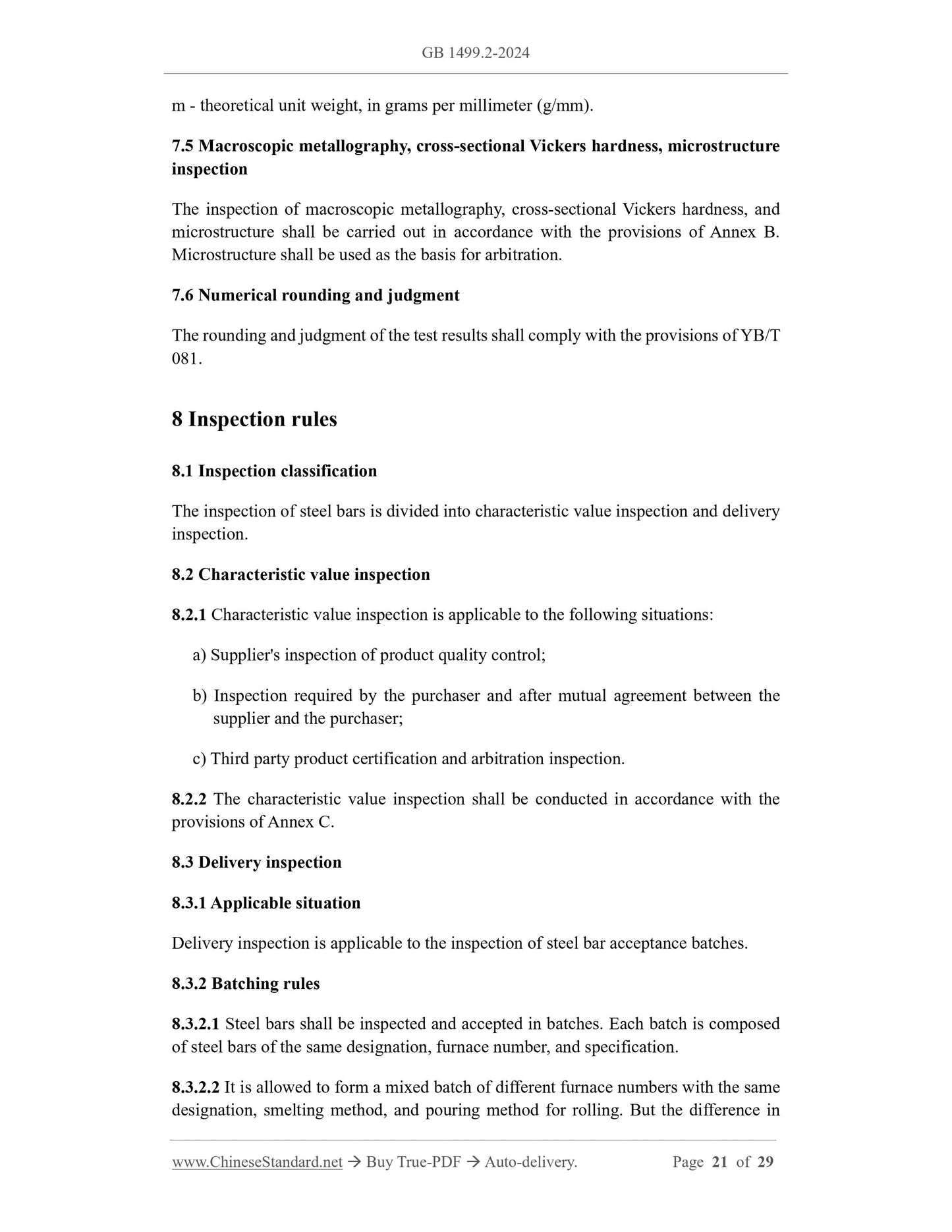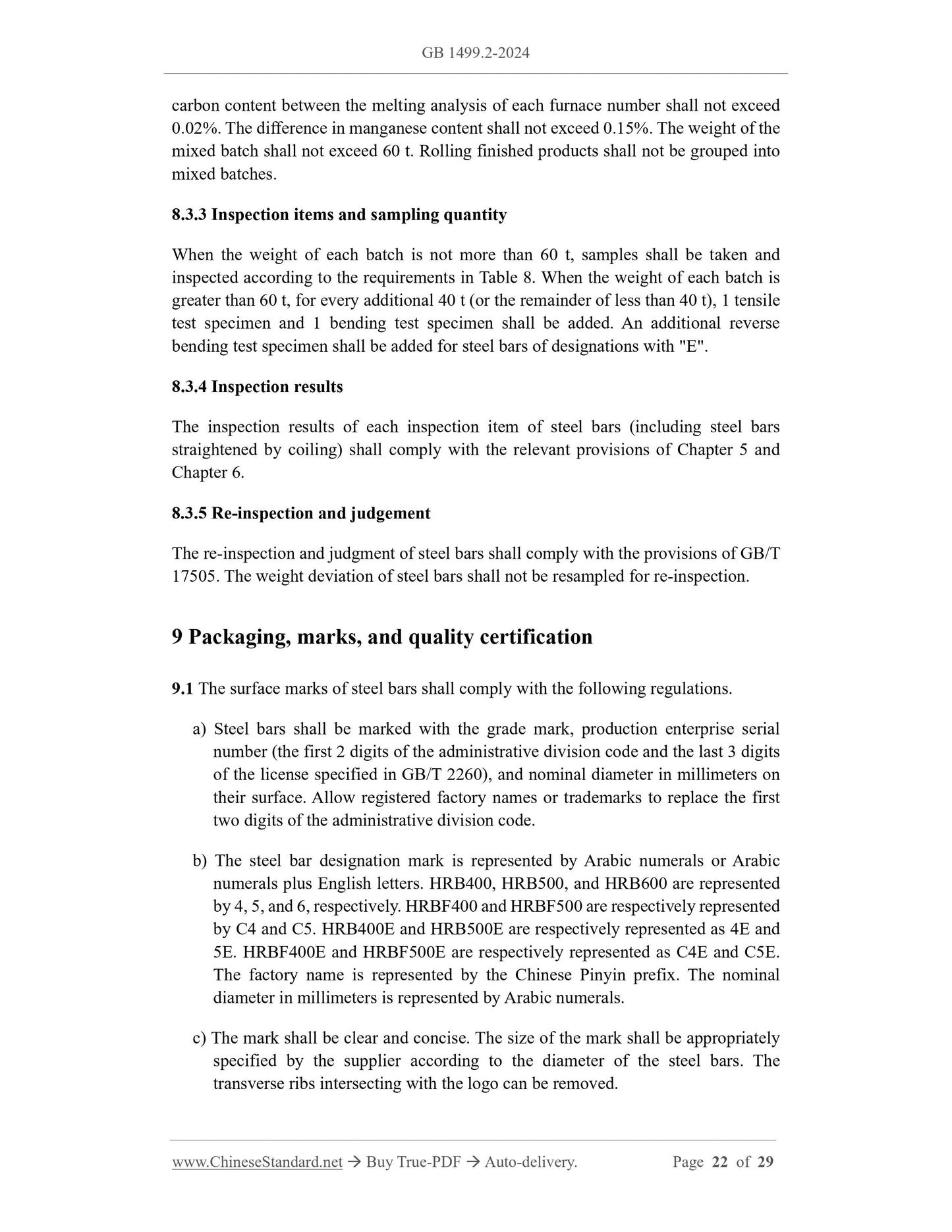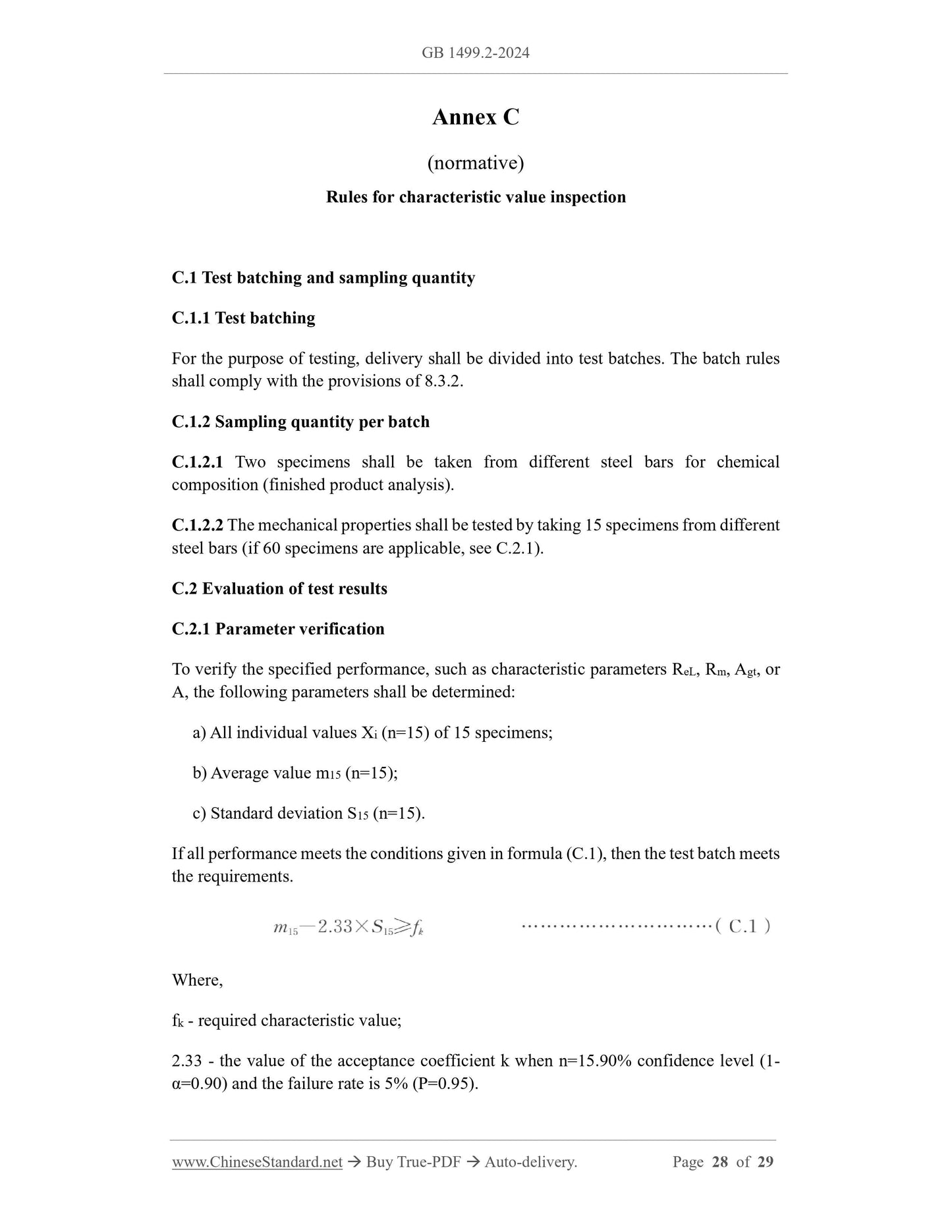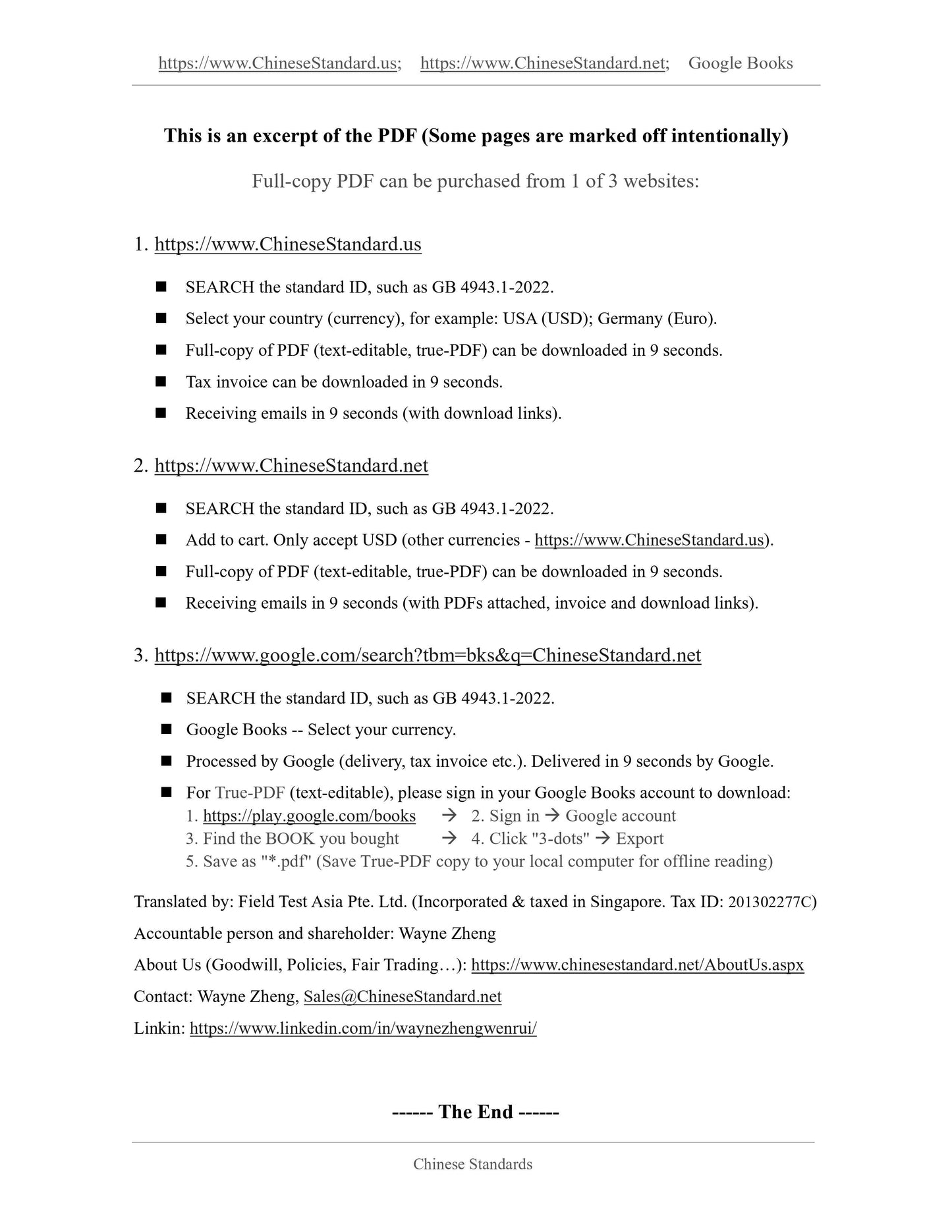1
/
of
10
www.ChineseStandard.us -- Field Test Asia Pte. Ltd.
GB 1499.2-2024 English PDF
GB 1499.2-2024 English PDF
Regular price
$220.00
Regular price
Sale price
$220.00
Unit price
/
per
Shipping calculated at checkout.
Couldn't load pickup availability
GB 1499.2-2024: Steel for the reinforcement of concrete - Part 2: Hot rolled ribbed bars
Delivery: 9 seconds. Download (and Email) true-PDF + Invoice.Get Quotation: Click GB 1499.2-2024 (Self-service in 1-minute)
Newer / historical versions: GB 1499.2-2024
Preview True-PDF
Scope
This document specifies the classification, designation, size, shape, weight andallowable deviation, smelting and performance, test methods, inspection rules,
packaging, marks and quality certificates for the hot rolled ribbed bars the
reinforcement of concrete (hereinafter referred to as steel bars).
This document is applicable to hot rolled bars and hot rolled bars of fine grains for the
reinforcement of concrete.
This document is not applicable to recycled steel bars and waste heat treated steel bars
that are re rolled from finished steel products.
Basic Data
| Standard ID | GB 1499.2-2024 (GB1499.2-2024) |
| Description (Translated English) | Steel for the reinforcement of concrete - Part 2: Hot rolled ribbed bars |
| Sector / Industry | National Standard |
| Classification of Chinese Standard | H44 |
| Classification of International Standard | 77.140.15 |
| Word Count Estimation | 20,241 |
| Date of Issue | 2024-06-25 |
| Date of Implementation | 2024-09-25 |
| Issuing agency(ies) | State Administration for Market Regulation, China National Standardization Administration |
Share
